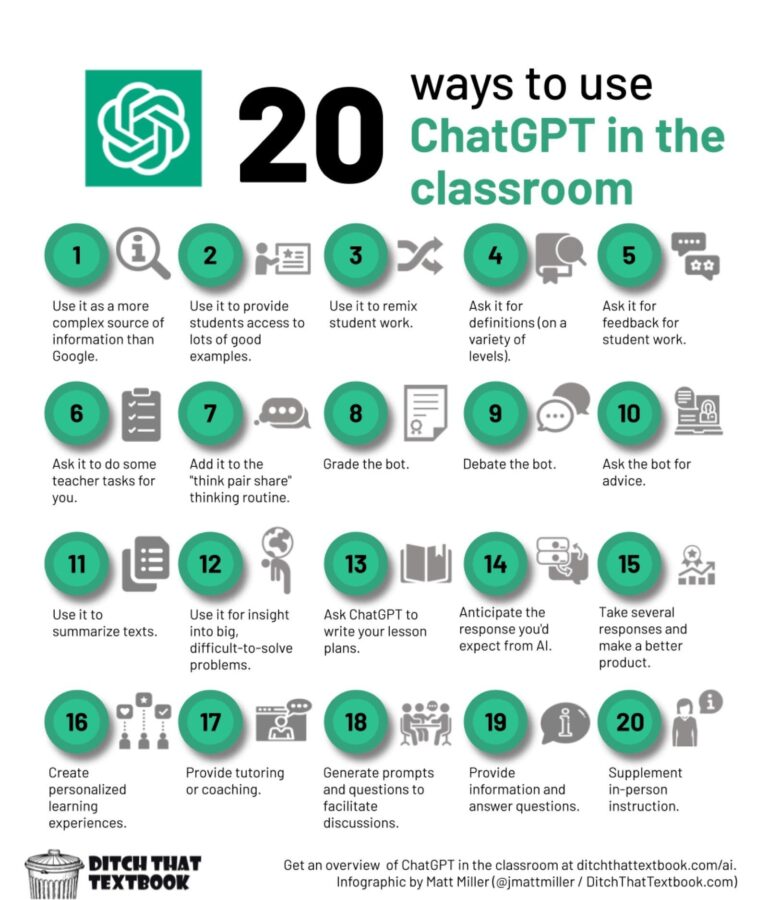Reimagining Education: Embracing AI to Enhance Student Empowerment
As artificial intelligence tools such as ChatGPT become increasingly prevalent in classrooms globally, concerns have surfaced about technology potentially undermining human creativity and autonomy. Yet, a recent analysis in Dallas News suggests that the genuine obstacle to student empowerment is not AI itself, but rather antiquated and uninspired teaching methods that fail to engage learners on a meaningful level. Instead of turning students into passive consumers of technology, it is the rigidity of traditional education systems that threatens to suppress curiosity and critical thinking, potentially confining future generations to memorization rather than innovation.
Leveraging ChatGPT to Foster Active Learning and Autonomy
Contrary to fears that AI diminishes student independence, ChatGPT can serve as a dynamic educational partner that encourages learners to take charge of their own academic journeys. When utilized as an interactive assistant, this AI platform offers immediate clarifications, multiple viewpoints, and personalized learning trajectories. This approach shifts students from passive recipients of information to active explorers, stimulating inquisitiveness and analytical thinking. Rather than supplanting human initiative, ChatGPT enhances it by prompting learners to formulate deeper questions instead of accepting rote responses.
It is the resistance to pedagogical innovation that more significantly hampers student autonomy. The consequences of stagnant educational practices include:
- Decreased student engagement, with learning perceived as tedious rather than exciting.
- Suppression of creativity due to inflexible curricula and the pressures of standardized assessments.
- Underdevelopment of critical thinking skills as memorization is prioritized over evaluation and synthesis.
In contrast, embracing AI tools like ChatGPT can lead to:
- Customized feedback that accelerates comprehension and personal growth.
- Exploratory learning environments that promote autonomy through choice and experimentation.
- Synergistic collaboration between AI capabilities and human insight, enhancing problem-solving abilities.
| Conventional Education | AI-Enhanced Learning |
|---|---|
| One-way information delivery | Interactive and engaging knowledge exchange |
| Uniform pacing for all students | Adaptive learning speeds tailored to individual needs |
| Delayed and limited feedback | Immediate, iterative guidance and support |
Empowering Educators to Cultivate Critical Thinking and Innovation
Teachers play a crucial role in nurturing minds that are both analytical and inventive. With AI tools like ChatGPT widely accessible, educators have transitioned from mere conveyors of facts to facilitators of profound understanding. Fostering critical thinking involves encouraging students to challenge assumptions, evaluate diverse perspectives, and generate original ideas. By prioritizing curiosity over memorization, educators create fertile ground for creativity, enabling students to evolve into proactive problem solvers rather than passive knowledge recipients.
To ignite this shift, educators can implement strategies that emphasize engagement and exploration, such as:
- Experiential Project-Based Learning: Engages students in hands-on tasks that solve real-world problems.
- Cross-Disciplinary Integration: Links concepts across various subjects to develop flexible thinking.
- Socratic Dialogue: Encourages deep questioning to uncover underlying assumptions.
- Collaborative Learning: Fosters creativity through shared ideas and diverse viewpoints.
| Teaching Approaches | Student Outcomes |
|---|---|
| Promotes independent inquiry | Enhances confidence and decision-making skills |
| Integrates technology thoughtfully | Builds digital literacy and fosters innovation |
| Delivers timely, constructive feedback | Supports ongoing improvement and mastery |
Bridging Educational Shortcomings to Combat Student Disengagement
Modern students often encounter educational environments burdened by outdated methodologies and insufficient engagement strategies tailored to diverse learning styles. When instruction lacks relevance and fails to connect with real-world contexts, student interest wanes, leading many to disengage mentally. Addressing these deficiencies requires more than just technological fixes; it calls for a fundamental transformation toward learner-centered education that cultivates curiosity, critical thinking, and applicable skills. This transformation involves adopting varied teaching methods, promoting interdisciplinary projects, and actively incorporating student feedback to foster inclusive classrooms where every learner feels acknowledged.
Factors contributing to disengagement include:
- Inflexible curricula that do not resonate with students’ passions or career goals.
- Insufficient professional development for educators in adaptive and motivational teaching techniques.
- Lack of resources to support personalized and meaningful learning experiences.
| Traditional Classroom Model | Innovative Classroom Model |
|---|---|
| Emphasis on memorization | Focus on project-based and experiential learning |
| Teacher-led lectures | Student-centered discussions and activities |
| Uniform assignments for all | Customized learning pathways |
| Minimal connection to real-world issues | Integration of current events and technology |
Effective Methods for Integrating AI in Educational Settings
To fully capitalize on AI’s educational potential, instructors must shift away from rote memorization toward nurturing creativity and critical analysis. AI tools should be employed as enablers of personalized learning experiences rather than substitutes for human instruction. This empowers students to engage deeply with material, encourages exploration, and hones problem-solving capabilities. Additionally, ongoing professional development in AI literacy is vital for educators to confidently and ethically incorporate these technologies into their teaching practices.
Successful AI integration requires clear guidelines that balance innovation with responsibility. For example, AI-driven analytics can quickly identify learning gaps, allowing for timely, targeted interventions. Below are practical strategies educators can implement:
- Hybrid Learning Models: Blend AI-powered assignments with interactive group discussions.
- Ethical AI Education: Teach students about data privacy, algorithmic bias, and responsible AI use alongside technical skills.
- Creative AI Projects: Utilize AI to enhance storytelling, programming, and design tasks.
- Instant Feedback Systems: Deploy AI platforms that provide real-time formative assessments.
| Approach | Advantage | Example Platform |
|---|---|---|
| Customized Curriculum | Addresses individual learner needs | DreamBox Learning |
| AI-Assisted Grading | Streamlines teacher workload | Gradescope |
| Virtual Labs and Simulations | Boosts experiential and immersive learning | Labster |
Looking Ahead: Transforming Education in the Age of AI
In a world increasingly influenced by artificial intelligence, it is crucial to understand that tools like ChatGPT are not the root cause of diminished student agency. Instead, the greater risk lies in educational systems that resist change and fail to innovate. As highlighted by Dallas News, thoughtfully integrating AI can rejuvenate learning experiences and empower students rather than restrict their freedoms. The real challenge is not opposing AI but reimagining education to inspire creativity, critical thinking, and lifelong learning in a rapidly evolving global landscape.







